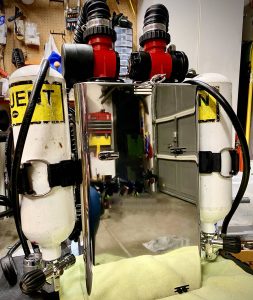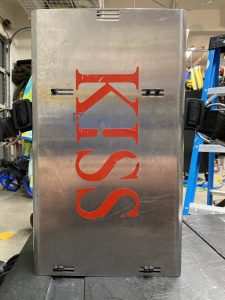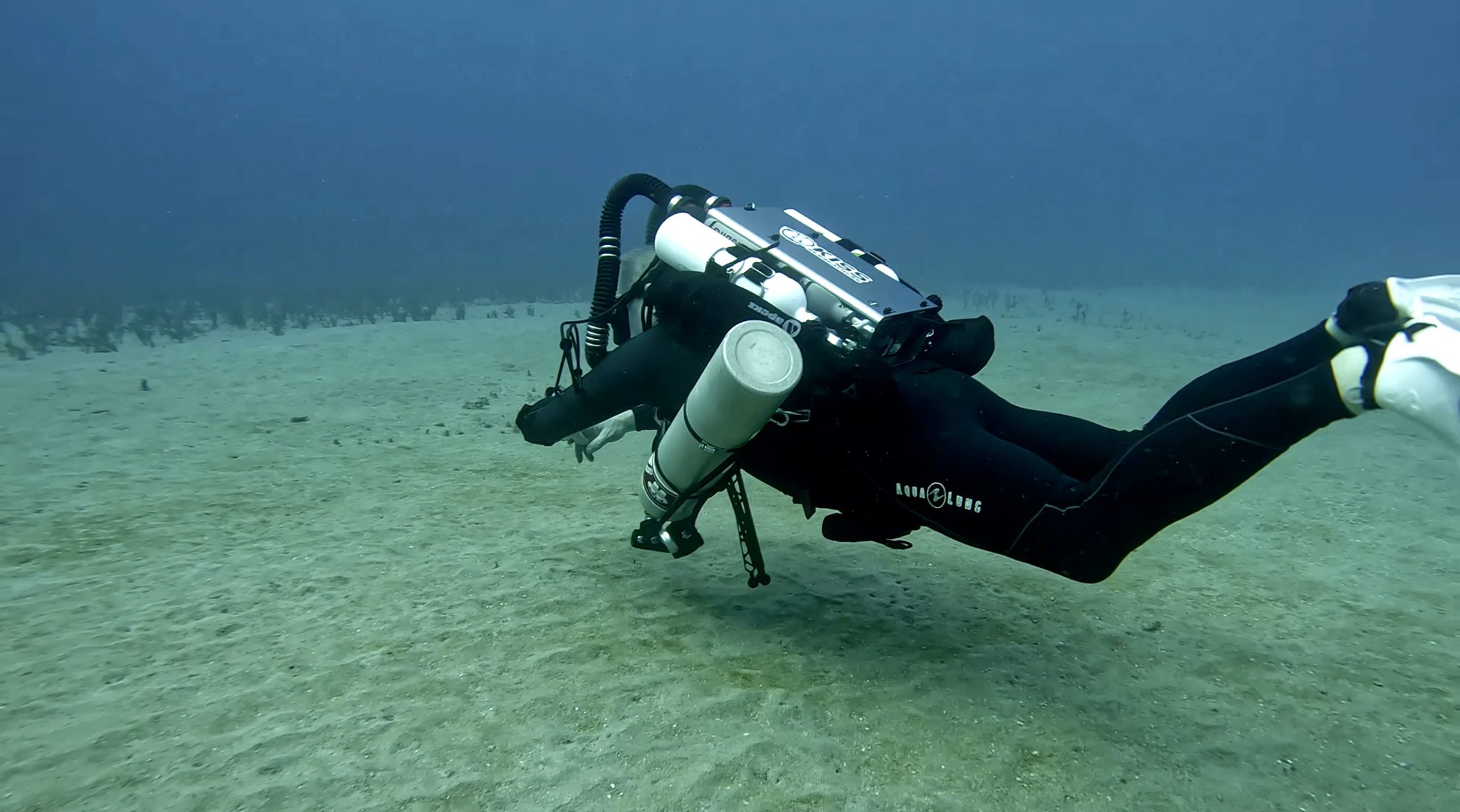 My Sport KISS Rebreather is Still Going Strong
My Sport KISS Rebreather is Still Going Strong
As we wind down the final weeks of 2022, I’m noticing some things I used to do a lot, but not so much lately. One of those is keeping up my blog. Partly, that’s because I hadn’t been able to do much traveling due to covid. My answer was to work a lot and try to stay positive.
Once things started opening up, I already had a backlog of client projects. I don’t think anybody feels too sorry for me having “had” to go to Cozumel, Roatan, The Bahamas, Virgin Islands, Hawaii and Florida to dive over the last handful of months. It really IS work. I swear.
Anyway, here we are with 2023 just weeks away and I already have a lot of diving booked for the year. So, I’m making this a year to get serious about writing more. By “serious” I mean not all that serious, but at least once in a while.
Back on topic… The Sport Kiss Rebreather…
To kick things off, I’m writing about something virtually no other diver will care about—my outdated, but well-loved Sport Kiss Rebreather. Why? Because, in spite of its age, I’m rather fond of it. Also, I’m convinced something newer isn’t necessarily going to make me any happier.
Just the same, not a week goes by that I don’t look at the KISS Rebreather website KISS Rebreather website and seriously consider updating. But, to what? I love the compactness and light weight of the Kiss Spirit, but the Classic offers extended range and capabilities. I have to choose between a more travel-friendly rebreather, or one that’s better suited to extended range diving.
Then, there’s other brands… I’ve never even tried another brand CCR. It would be pretty cool to dive a rebreather that didn’t look like it was build in someone’s garage. If anyone has experience with a Revo Rebreather, I’d love to hear your thoughts.
Nevertheless, I like diving the KISS, and I like the concept. For moderate-depth dives, all I have to do is monitor my PO2, which I do religiously, and spritz a little oxygen in every 15 minutes or so. It’s pretty true to its namesake “keep it simple” concept.
Also, my old KISS Sport is more travel-friendly than I give it credit for. Even with the stainless case, my entire rebreather (minus cylinders) travels in a Pelican Air 1607 case. The whole package, including my plate and wing weighs just 48 pounds, ready to fly.
A more important issue is parts availability. Eventually, something is going to fail that I can’t replace and I’ll have no choice but to update. For now, I’ll just keep diving it.
Part of the reason I decided to write about it, I just want to give the Sport KISS some love. BTW, I believe “Sport” first, and then “KISS” is correct, but KISS Sport seems like a more natural word order. After all, no one says, “Nova Chevy.” But, who am I to question it?
The thing is TONS of divers learned rebreather diving on the Sport KISS. Yet, there’s hardly anything written about it on the Internet. One or two videos, hardly any pictures… Based on nostalgia alone, there should be something.
The way I figure it, this post will likely gain prominence in Google right quick. Then maybe some of my Sport KISS brethren will comment on it and maybe send me a picture or three. Who knows?
Sport KISS rebreather, cool thing #1
 In general, dive gear tends to lose its shiny newness pretty quickly. The Sport KISS, with it’s metal case is certainly prone to earning a few scratches. Mine never was new—at least not for me. So, it was looking pretty, let’s say, well-used. On top of that, KISS rebreathers of that era tend to have a certain, ‘made in someone’s basement’ look anyway.
In general, dive gear tends to lose its shiny newness pretty quickly. The Sport KISS, with it’s metal case is certainly prone to earning a few scratches. Mine never was new—at least not for me. So, it was looking pretty, let’s say, well-used. On top of that, KISS rebreathers of that era tend to have a certain, ‘made in someone’s basement’ look anyway.
In addition to being anal about my diving habits, I meticulously maintain my gear. But, even well-maintained, perfect functioning dive equipment can look pretty rugged over time.
I don’t know when it hit me, but over a span of a week, I was overcome by a wave of inspiration. I thought, “you can polish stainless steel…” How cool would it look if my Sport KISS had a mirror finish?
So, armed with about 15 grades of wet sand paper, several buffing wheels and tub of Flitz, I got to work. Polishing the rebreather case was quite a bit more work than I imagined. Also, buffing compound flew everywhere. In the end, the ol’ Sport gleams like a cyborg. Try that with your fancy, X-CCR!
On top of that, the awesome people at KISS sent me new stickers just for asking. To people that don’t know anything about rebreathers, mine almost looks like it isn’t obsolete.
Sport KISS rebreather, cool thing #2
I joke about my rebreather being obsolete and built in a garage because it’s more or less true. However, KISS rebreathers haven’t changed at all in their basic function. The breathing loop, ADV, MAV, sensor location—everything works the same for newer models as it did when the Sport was current.
There are refinements for sure. KISS rebreathers no longer look so homemade, and I’m told the counter lung designs make the work of breathing better in different diver orientations. As much affection as I have my vintage Sport KISS, I’m dying to buy a new rebreather.
Anyway, the Sport KISS CCR works like a champ. It holds positive and negative pressure extremely well (because, maintenance), and has a proven bi-lateral scrubber design. I’ve read that the Sport Kiss scrubber design is one of the reasons for the published depth limit. I don’t test the limits of scrubber duration, so I can’t say much about that.
Sport KISS rebreather, cool thing #3
With the stainless steel backplate, I only use about 6 pounds of additional lead with a drysuit and thick undergarments. In warm water with a 5mm wetsuit, I am exactly neutral with an aluminum backplate and no additional lead. Since the weight is distributed up my back, along with my backplate, perfect trim is easy to achieve.
That’s something I think about a lot if I were to replace it with a newer rebreather. Weight concentrated down low sucks for trim. I’d hate to “upgrade” only to learn that my new several thousand dollar rebreather is miserable to dive in a drysuit.
I’d love to hear from anyone that’s been diving the Kiss Orca Spirit in cold water with a drysuit. I’ve read the specs easily a hundred times and can’t tell from that what weighting issues I can expect.
Joe’s Sport KISS rebreather upgrades
As an extension of cool thing #2, having much of the rebreather remain the same well into future models meant I could do a few upgrades and a sort-of mod.
Upgrade #1 – I use a Golem Shrimp BOV. I don’t think anything more needs to be said about it. If you know, you know. Divesoft makes an awesome BOV too.
Upgrade #2 – I’m sure throngs of Sport KISS rebreather divers will be glued to this post (that was sarcasm). No doubt some of you will agree that the super stiff, stainless hoses are a pain in the butt. In my experience, they were (a) too long, (b) tended to unscrew themselves from the MAV, and c) didn’t pack well at all. I replaced all of my hoses with exact-length Miflex hoses. It’s kind of a pricey upgrade when you replace all of them, but it’s a rebreather. Everything’s expensive—except helium, but that’s a topic for a different article.
Upgrade #3 – This one is kind of a modification. Sport KISS cylinder mounts were crap. After trying a lot of things, I finally came up with a clean way to use dual mini cam bands without drilling holes or making it look any more DIY than it already did from the factory. In fact, I would argue my system looks cleaner.
Upgrade #4 – Instead of the original wrist mounted triple sensor array, I use Shearwater Petrel 2 with a Fischer connector. If I were to do that over, I’d probably opt for a 4-pin connection, but that wasn’t really a thing at the time of the conversion. The original displays were bulky and hard to calibrate and maintain, and just kind of sucked in general. Now there’s a Petrel 3….
Upgrade #5 – Tower upgrade to use R22 sensors. The old sensors were harder to get and more expensive. I know some company used to make an aftermarket replacement to accomplish the switch. Mine is original Kiss, which would be impossible to find these days. My biggest worry about traveling is the risk of breaking an irreplaceable part.
In the end, my Sport KISS rebreather is pretty great. It’s not appropriate for extreme depth CCR dives. For the moment, I’m not too worried about that. Yes, there are some big dives I’d like to do on a rebreather, but I have to learn and really don’t feel a need to rush things. BTW, I do have 3 sets of doubles for sale… just sayin’.
If you are a fellow Sport KISS CCR diver, I’d love to hear from you. Post a comment or drop me a note telling me about your experiences and anything you’ve upgraded or changed. If you send pictures, I’ll post them.



There’s a youtube channel called Dive Talk. the two hosts both dive Spirits and Sidewinders and are really good about answering questions. Also one of the hosts dives exclusively in a drysuit so he is probably a perfect resource for your drysuit+spirit questions.
Thanks! I’ve seen the channel. I’ll reach out to them. It seems silly to be considering a new rebreather when mine is so good in the water. But, it is very old, so it seems like I should get serious about a replacement. I’m also very interested in the Revo III.